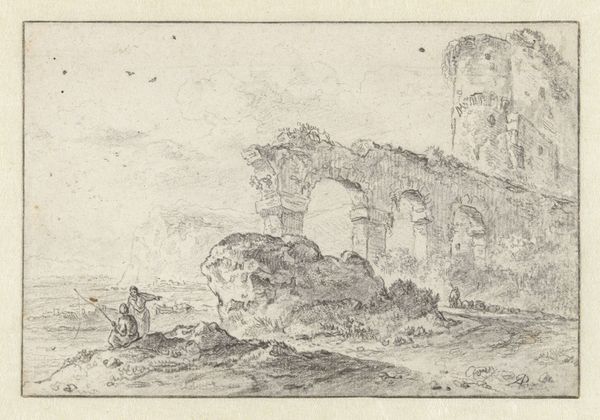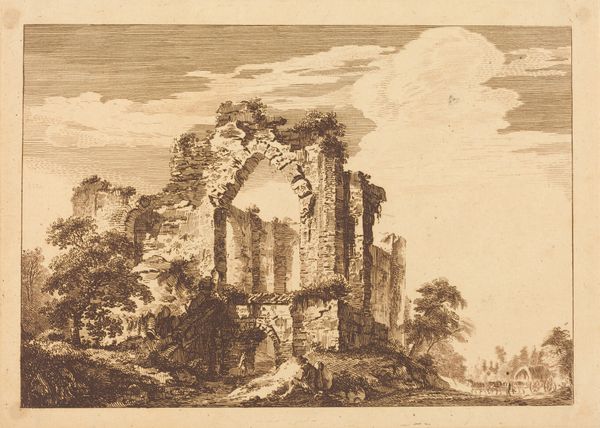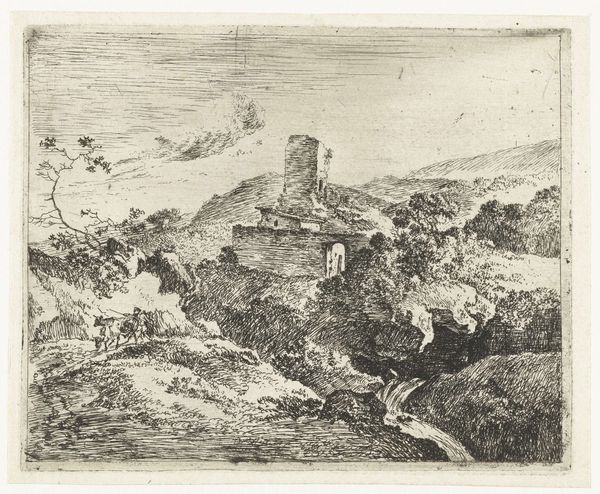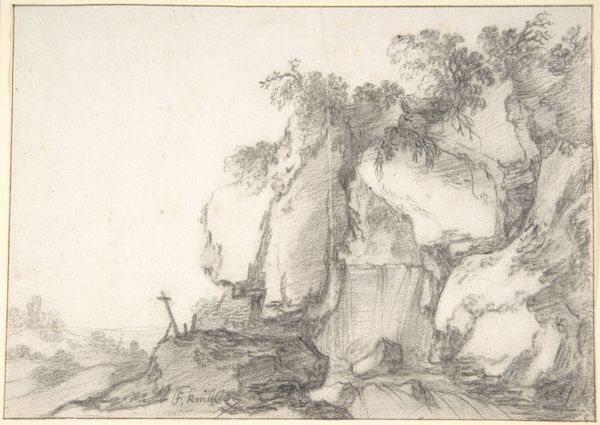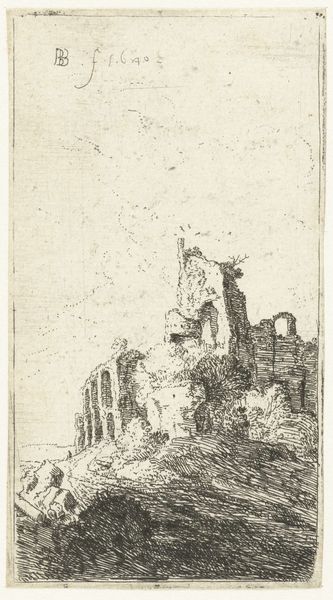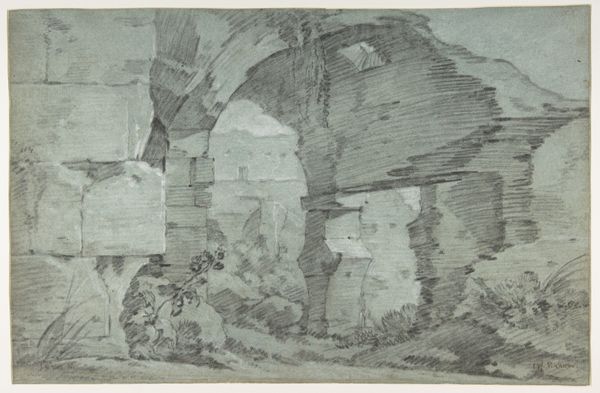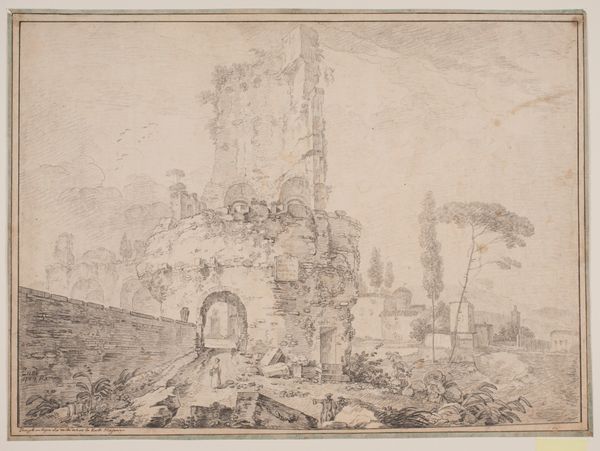
print, etching
#
baroque
#
dutch-golden-age
# print
#
etching
#
landscape
#
figuration
#
history-painting
Dimensions: height 195 mm, width 261 mm
Copyright: Rijks Museum: Open Domain
Curator: Looking at "Ruines van het Nymphaeum Alexandri", an etching by Jan Gerritsz van Bronckhorst from the Dutch Golden Age, made sometime between 1613 and 1661... What's your initial response? Editor: My first thought is "melancholy." The ruins dominate the scene, their grandiosity faded. There's this lone figure in the foreground that seems dwarfed, a silent observer of history’s decay. It feels almost romantic, but laced with sadness. Curator: Yes, there's a definite feeling of Romanticism bubbling even beneath its Baroque rendering. Note the symbolic weight of the ruin itself. What do ruins signify, historically? Beyond the obvious physical disintegration, it evokes the passage of time and the ephemeral nature of human achievement, a poignant theme echoed in Dutch Golden Age art. Editor: Absolutely. It’s not just the past crumbling. There's a strong suggestion of cultural and perhaps even political commentary in that decay, don't you think? Alexandria was a pinnacle of civilization; to see its Nymphaeum in such disrepair…it implies something about power, legacies, and what we choose to remember or let fall into oblivion. Curator: Indeed. And that little figure you noticed – the wanderer is an interesting symbol, too. Often we read these travelers, in imagery of this period, as a reminder of where they are situated in society. Landscape wasn’t purely a backdrop but a space for the human story to unfold and offer clues. The individual here, facing the grand scale of what came before. The history painting gives a clear reference. Editor: It brings into sharp focus our own fleeting presence in the face of history, yes. I find the print itself, the lines of the etching, add to this somber mood. There is an aged quality to the etching itself. In terms of institutional context, a print allows wider access and viewing by audiences than other traditional painting or drawing could achieve. This would be one way it engaged in a broader social discourse. Curator: The etching style, characteristic of the era, further amplifies these readings. Consider how its creation facilitated discussion through visual engagement with a broader viewing public. I am seeing similar themes coming up again and again in different mediums, during the time. It helps to place similar symbolism we notice within that Dutch society's collective understanding and values, adding depth to Bronckhorst's piece here. Editor: That’s it precisely! Seeing this, thinking about its role in public engagement and how its visual motifs tie into shared social themes makes one see not only the individual art but also the period in much higher resolution. Curator: I concur entirely! The artist engages, across time, with themes which we can find still resonate today.
Comments
No comments
Be the first to comment and join the conversation on the ultimate creative platform.


